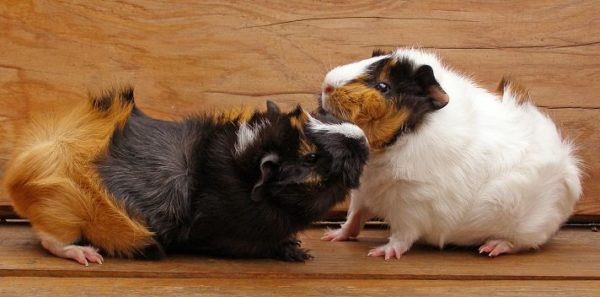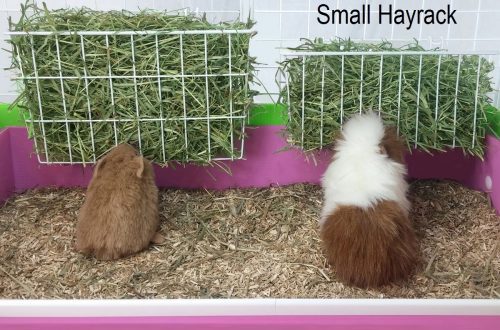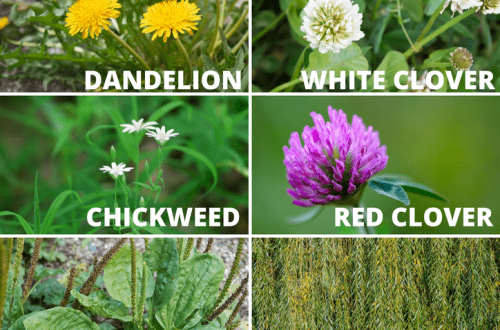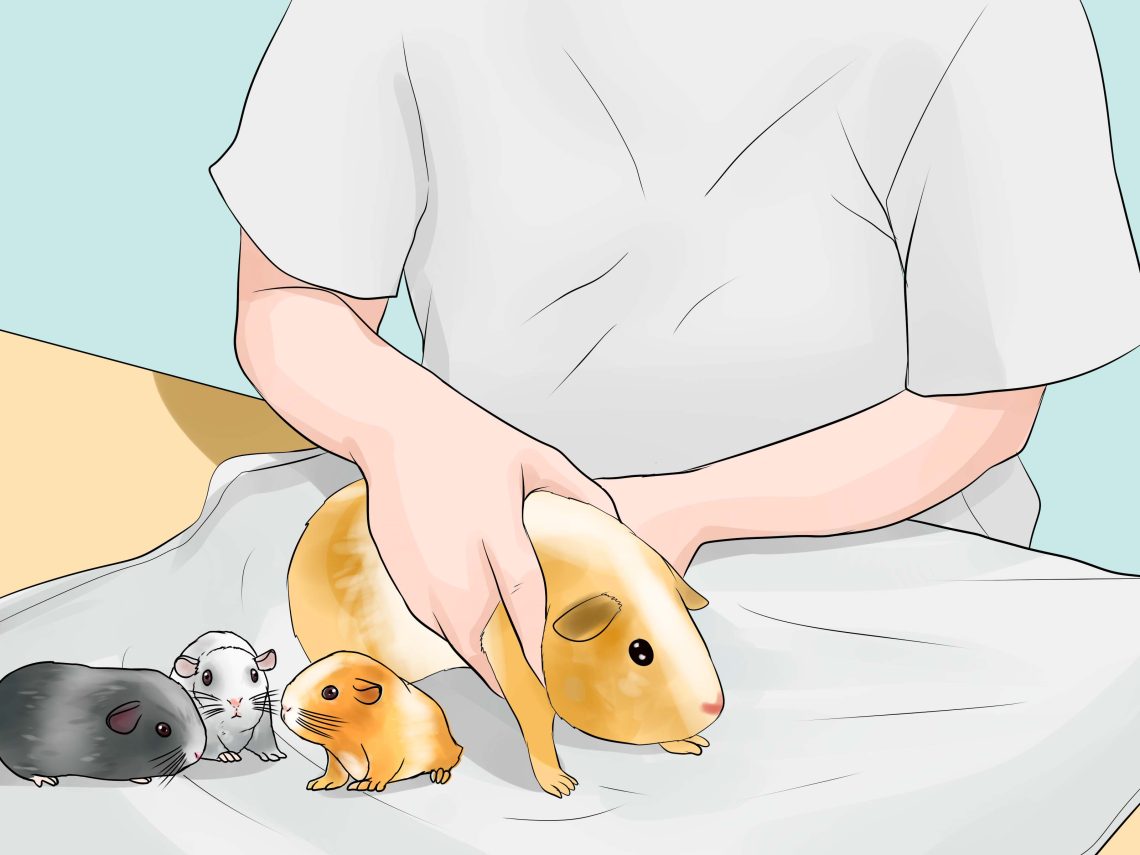
Reproduction of guinea pigs: mating and breeding at home
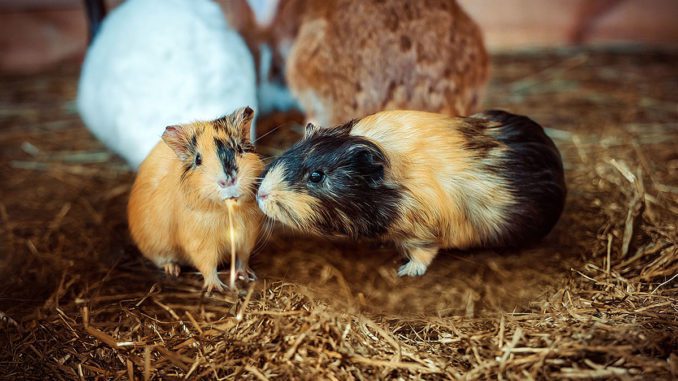
Guinea pigs have become very popular pets for their good-natured disposition and unpretentiousness in content. Quite often, the owners of charming rodents have a desire to get offspring from a family pet at home. Reproduction of guinea pigs at home is a rather interesting process based on the study of the physiology of guinea pigs, proper selection of a pair and creation of comfortable conditions for mating.
Contents
How guinea pigs breed
In the wild, the mating season for South American relatives of guinea pigs occurs most often in the spring and lasts until late autumn. Furry rodent owners are also encouraged to mate during the spring months. In the comfort of home, guinea pigs mate all year round. But the young, obtained in the summer from large dairy females, are considered healthier and more suitable for further reproduction.
Under natural habitat conditions, guinea pigs live in large flocks, consisting of one leader male and 10-20 females. In a flock, part of the females is responsible for the overall rearing of offspring. The rest of the females protect the territory from relatives or predators, announcing the approach of danger with a loud siren. The ability of males to simultaneously fertilize several females is used in polygamous breeding of guinea pigs, when one cage contains one male and 10 females.
Inexperienced owners of funny pets are advised to create one heterosexual couple. Cute rodents become a real family. The male gently cares for the female. Animals care for and love each other all their lives.

Why pigs don’t breed
Often, guinea pigs do not breed. Even during estrus, the female does not allow the male to approach her because of the banal lack of sympathy for the male. Exposure to time or attempts to sit down in this case will not be successful and will cause frequent fights between pets.
A belligerent female can bring charming babies from another partner, provided that she develops friendly relations with the new male.
Breeding guinea pigs at home safely occurs when:
- proper balanced nutrition;
- optimal microclimate, the air temperature in the room is above +20 degrees.
Temperature fluctuations, too dry air, violation of the conditions of care and feeding, diseases and congenital developmental anomalies adversely affect the processes of mating and conception.
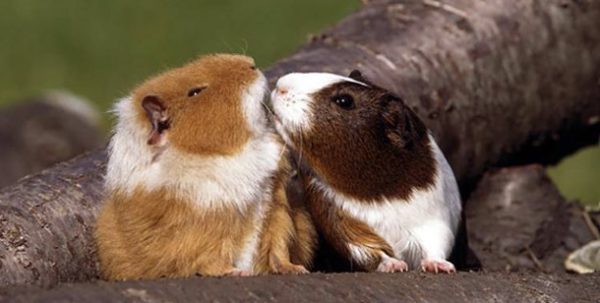
At what age is mating allowed?
Guinea pigs reach puberty at 4 weeks of age for females and 10 weeks for males. Sometimes very early puberty is observed at 3 weeks in females and at 8 weeks in males, therefore, at the age of 3 weeks, it is necessary to transplant young animals from their mother, forming groups according to gender.
Early mating of guinea pigs is fraught with:
- general weakening of the body of the female;
- pathological course of pregnancy and childbirth due to underdevelopment of the birth canal.
Therefore, healthy adults with a body weight of at least 500 g at the age of 10-11 months for females and from 1 year for males are allowed to breed.
It is desirable to reduce the female for the first time in the interval from 10 to 12 months. Late first pregnancy threatens with a complication during childbirth due to ossification of the pelvic ligaments.
Although guinea pigs can successfully mate at 6-8 months of age, veterinarians advise against mating young females before 10-11 months of age.
Early pregnancy negatively affects:
- on the growth of the skeleton and muscle mass of the animal;
- threatens with the pathology of pregnancy and childbirth;
- lack of milk or maternal instinct in a young mother;
- death of a rodent.
Harmless to the health of the female is considered to be a two-time annual coverage of the female for offspring. More frequent mating undermines the female health of an adult animal, which is fraught with:
- spontaneous miscarriages;
- abortion, premature birth;
- the birth of non-viable cubs;
- late toxicosis and death of the female.
The onset of pregnancy
When confirming the fact of the onset of a long-awaited pregnancy, it is recommended to resettle the male up to six months from the female, so that the expectant mother can safely bear and feed newborn piglets, as well as restore health after pregnancy and childbirth.
The female is able to get pregnant again within a day after giving birth.
Hormonal restructuring of the body during a new pregnancy can provoke the death of the entire born brood or the mother herself.
Crossbreeding between the closest relatives of guinea pigs is highly undesirable due to the risk of giving birth to a weak or non-viable brood with congenital pathologies.
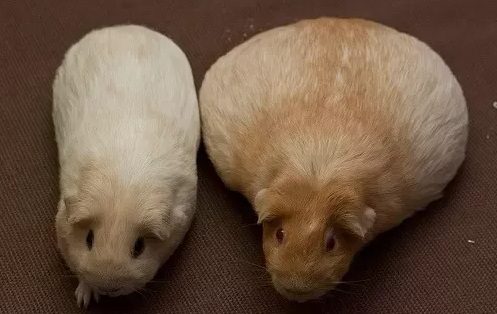
How to select and prepare guinea pigs for mating
Reproduction at home of guinea pigs bears fruit only if the rules for selecting and preparing a pair for mating, maintaining the rules of acquaintance and planting animals, creating optimal feeding and keeping conditions for mommy and her fluffy brood, are observed.
What individuals are allowed to breed
Allowed for breeding are healthy plump individuals born in summer from large dairy females, approximately the same age, which must have:
- body weight of at least 500 g, ideal weight 700-1000 g;
- anatomically correct body structure and pronounced breed characteristics;
- shiny high-quality coat;
- benevolent character.
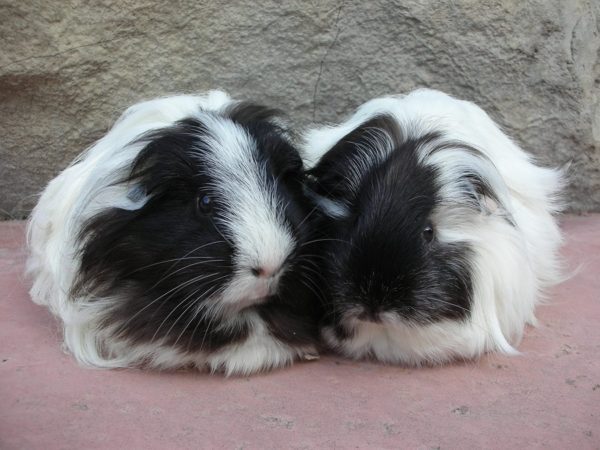
Fluffy rodents suffering from:
- bad habits;
- aggressive character;
- problems with teeth and eyes;
- adult roan guinea pigs and Dalmatians;
- sick, weakened or over-fed individuals.
Guinea pig sperm loses its activity in both obese and very thin animals. Recently recovered animals are kept in additional quarantine. Overfed or malnourished pets are prescribed a special diet to adjust their weight.
When to start breeding
You can start breeding guinea pigs only after establishing a 3-4 week quarantine for a newly acquired animal. This measure is necessary for the adaptation of the purchased guinea pig. As well as exclusion of infection of pets if the new partner has hidden diseases.
Getting to know couples
The next step should be to introduce funny pets. To successfully reduce guinea pigs, it is recommended to control the behavior and reactions of animals to each other. Relatives can get acquainted for quite a long time, so the owners of small animals are advised to be patient and not to bring furry rodents together until friendly relations are established. Acquaintance is aimed at getting used to the guinea pig’s smell of a partner. Rapid landing of rodents with the exception of this stage is fraught with bloody fights, sometimes with very sad consequences.
At the initial stage of the couple’s acquaintance, it is recommended to place two cages with guinea pigs side by side at such a distance that they can see and smell each other, but cannot bite off the partner’s limbs through the gaps between the bars.
The next step should be to introduce the animals in neutral territory, preferably in a closed room, unfamiliar to both individuals. For this method, it is recommended to prepare a sufficient amount of treats and release the animals. Most rodents will go about eating without paying attention to the partner.
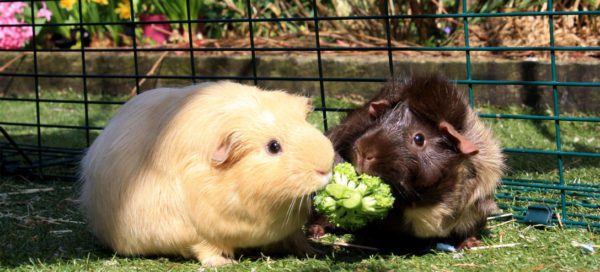
But in the event of a fight, it is urgent to separate the animals. Guinea pigs are wrapped in towels and wait a few more days with this stage.
Embedding rules
If the rodents are calm enough to eat in neutral territory, you can proceed directly to the stage of planting guinea pigs. This process requires compliance with certain rules:
- The ideal option would be to place the animals in a completely new, spacious, odorless cage, about 1 m² in size. You can settle the animals in the old carefully washed and disinfected cage.
- Before insertion, it is advisable to bathe both partners in a lavender shampoo or wet the nose of each rodent with a drop of lavender oil to mask the smell of a new neighbor.
- All floors and stairs should be absent in the cage to prevent rodents from getting injured during possible fights.
- Before placing a new individual in a cage, it is recommended to rub its coat with hay with the smell of another rodent.
- It is necessary to put a sufficient amount of hay and treats on the floor of the cage to distract the animals from a showdown.
- The owner during the first day should be inseparably near the cage with pets and be ready to separate them.
- If the rodent’s hair stands on end on its neck, the guinea pig tramples on its paws and grinds its teeth, it is urgent to remove the aggressor from the cage before the onset of a fight.

A fight is brewing – urgently seat the pigs in different cages - If guinea pigs are sniffing each other, pushing, purring, jumping and fluffing fur – do not interfere. Animals get used to each other.
- In the event of a bloody fight, you should immediately seat the fighters in tight gloves or a towel for a long time in cages located in different rooms. An aggressive animal in this state can bite or scratch the owner within a day after trying to sit down. It is recommended to wait a few days and start the dating stage all over again.
- When establishing friendly relations, you can observe touching care and mutual love of guinea pigs, but even in this case, you must be prepared for possible fights.
- Pets are heavily fed with juicy fruits and herbs.
- Before estrus, it is recommended to seat a couple for 2-3 days, after such a measure, the spermatozoa of males become better and more tenacious.
- A successfully transplanted pair can bring offspring after the first estrus or not give offspring for six months.
- If it is not possible to transfer rodents or the female does not become pregnant for more than 6 months, it is recommended to change partners, maintaining the norms of quarantine, dating and planting.
Estrus in guinea pigs
The male can fertilize the female only during estrus, which most often occurs in females every 15-17 days.
The period of sexual desire lasts only 48 hours. The most favorable for conception are the first 10-12 hours from the beginning of estrus.
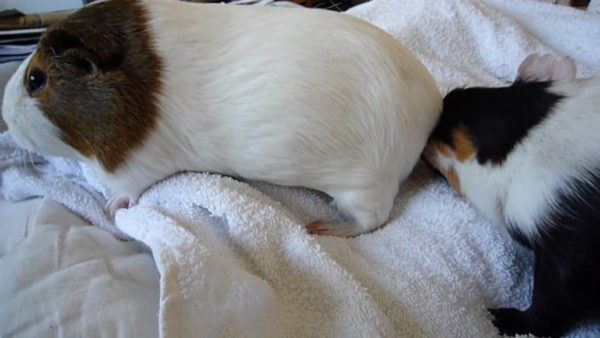
Inexperienced owners of domestic rodents are often interested in whether guinea pigs have periods. Furry pets do not have periods. To understand that a guinea pig wants a male is possible only by examining the loop and the behavior of rodents.
Estrus in young guinea pigs begins at 4 weeks. With early puberty, the first estrus occurs as early as 3 weeks of age. It is advisable not to allow breeding females with the first estrus. The organism of the female individual has not yet reached physiological maturity, and early pregnancy can result in the pathology of childbirth and the death of the female with the brood.
During estrus, ovulation occurs in the body of the female. This hormonal process is accompanied by the secretion of mucus of the required consistency to improve the gliding of spermatozoa and the safe attachment of fertilized eggs in the uterine cavity. The loop of the female is able to open only during estrus or childbirth. At this time, the female can be safely fertilized. The owner of a guinea pig is recommended to learn how to determine the onset of estrus in a pet in order to plan the time for the next mating of small animals.
Signs of heat in a guinea pig
The behavior of the female
The female during estrus wags her booty in front of the male. Raises the back of the body in front of him in a fixed position with the front paws apart. In the absence of a partner in the cage, the onset of estrus in a female can be determined by the characteristic behavior of the animal during stroking on the back:
- the rodent growls;
- arches back;
- twists the back of the body.
Male behavior
The male actively cares for the female. He makes a loud mating song with trumpet sounds, tries to jump on a female.
Loop change
During estrus, the external genital organs of the female look enlarged, the loop opens. The guinea pig has a white bloodless discharge, the fur on the back of the body becomes wet.
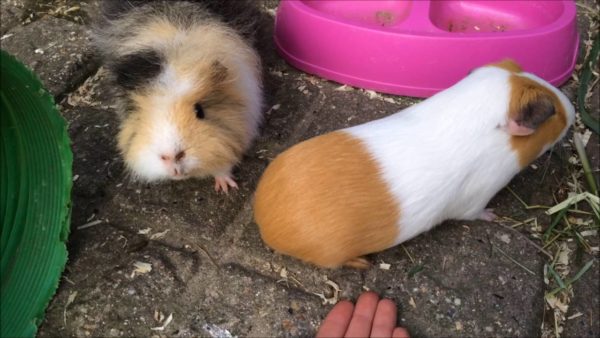
At the onset of estrus, the mated pair mates several times a day at any time. Sexual intercourse lasts a few seconds. After two days, the female’s loop closes. Partners cease to be actively interested in each other and make attempts at mating.
2 weeks after mating, a successful pregnancy can be diagnosed, which in guinea pigs lasts about 10 weeks.
With the right approach to breeding guinea pigs at home, even inexperienced breeders manage to get adorable fluffy piglets ready to explore a new world from the first minutes of their lives.
Video: how guinea pigs mate
Breeding and mating guinea pigs at home
3 (60.47%) 85 votes



